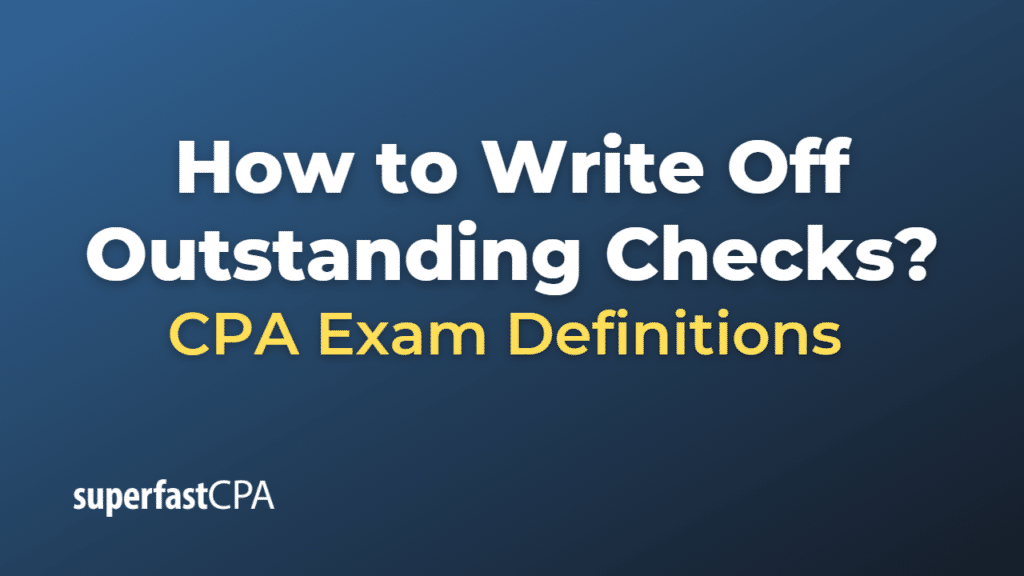How to Write Off Outstanding Checks
Writing off outstanding checks typically refers to the process of resolving checks that were issued but never cashed or deposited by the recipient within a reasonable time period. This could happen for several reasons, like the check was lost, forgotten about, or the recipient no longer exists.
Before writing off an outstanding check, you should make an attempt to contact the payee and resolve the issue, as the check represents a liability that the business owes. However, if these attempts are unsuccessful and a certain period has passed (usually a few years, depending on local laws), the check may be considered “stale” and can be written off.
Here’s a step-by-step process on how to write off outstanding checks:
- Review Bank Reconciliation: Identify any checks that have been outstanding for an unusually long period.
- Contact the Payee: Attempt to contact the payee to determine why the check hasn’t been cashed.
- Void the Check: If the check is stale and you’ve made reasonable attempts to contact the payee, you can void the check in your accounting system.
- Record the Write-off: Write off the check by decreasing (crediting) your outstanding checks account and increasing (debiting) your main cash account.
The journal entry for writing off an outstanding check would look like this:
| Date | Account Title | Debit ($) | Credit ($) |
|---|---|---|---|
| mm/dd/yyyy | Outstanding Checks | xxx | |
| Main Cash Account | xxx |
In some jurisdictions, the “unclaimed property laws” or “escheatment laws” require businesses to turn over stale checks to the state after a certain period. The state then assumes responsibility for reuniting the funds with their rightful owner. In these cases, instead of writing off the check to your main cash account, you would remit the funds to the state.
As always, when handling such matters, it’s important to consult with a qualified accountant or financial advisor.
Example of How to Write Off Outstanding Checks
Let’s consider an example with a company called “EduCo” that issued a check for $500 to a supplier, “SupplyPro”, six months ago. However, this check has not been cashed or deposited by SupplyPro, and it still appears as an outstanding check in EduCo’s bank reconciliation.
EduCo attempted to contact SupplyPro multiple times but received no response, and there are no outstanding invoices from SupplyPro that the check could be applied to. After consulting with their accountant, EduCo decided to write off the check.
Here’s how EduCo would write off this outstanding check:
- Review Bank Reconciliation: EduCo identifies the $500 check to SupplyPro as an outstanding check that has not been cashed for six months.
- Contact the Payee: EduCo attempted to contact SupplyPro multiple times but received no response.
- Void the Check: EduCo voids the check in their accounting system.
- Record the Write-off: EduCo records the following journal entry to write off the check:
| Date | Account Title | Debit ($) | Credit ($) |
|---|---|---|---|
| 06/23/2023 | Outstanding Checks | 500 | |
| Main Cash Account | 500 |
This entry reduces the Outstanding Checks account by $500, indicating that EduCo no longer has this check outstanding, and increases the Main Cash Account by $500, reflecting that EduCo’s available cash has increased by this amount.
Remember, this is a simplified example and actual procedures may vary depending on the company’s specific circumstances, local laws, and accounting policies. It’s always a good idea to consult with a qualified accountant or financial advisor when dealing with these types of issues.













